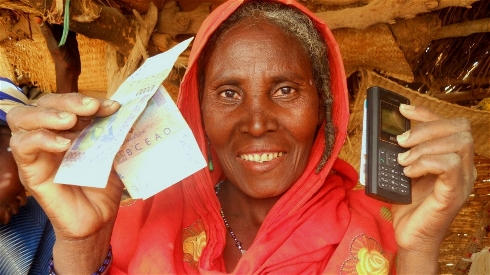This is the third in a series of articles on the potential of cash transfer programmes for Africa. In the last post, we concluded that cash transfers may be better suited to delivering humanitarian assistance than addressing the structural causes of poverty. According to ODI’s Humanitarian Policy Network “the question is no longer whether cash is an appropriate way to meet the needs of people engulfed in crisis, but how organisations, donors and governments can use cash transfers to best effect”.

The “Cash Atlas” documents over 700 emergency cash transfer programmes globally, including 27 states in sub-Saharan Africa. These initiatives are estimated to have reached more than 15 million African citizens. Between 2009 and 2013, 53 donors spent US$692 million on humanitarian cash transfer programmes across the globe.
Increasingly complex global emergencies have forced an evolution in thinking about humanitarian responses. The use of cash transfers can reduce the risks associated with providing assistance to remote areas. Cash is coming to the rescue.
Quick wins
International relief agencies recognise clear benefits of using cash over traditional forms of emergency assistance. Primarily, cash is easier to manage and less risky to distribute. Electronic transfer systems are less susceptible to abuse than other means of delivering aid. By avoiding the procurement and storage of food aid, misappropriating resources becomes much more difficult. Cash offers greater value for money as its fungible nature enables multiple needs to be addressed with a single intervention.
In Somalia, a country facing both food and physical security threats, Degan Ali of Adeso, believes the transfer of cash works because it is “less visible, more dignified, uses fewer intermediaries, is in transit for less time and is a more flexible resource to meet needs beyond food”. Keeping distributions of food and other goods out of the hands of Al-Shabaab could diminish the longevity of the conflict and reduce risk for aid workers. Being inconspicuous, cash is less likely to be stolen.
For the recipients of emergency aid there is greater dignity in the freedom of choice that receiving cash offers. Recipients feel empowered, rather than helpless and reliant on others.
A study carried out by Save the Children in Malawi found that by getting capital back into the local markets, cash transfers can have positive multiplier effects in communities recovering from food shortages, encouraging local trade and production. There is, however, a risk that flooding a small market with an inflow of cash will distort local economies.
Building resilience
In 2005 the Ethiopian government launched its Productive Safety Net Programme (PSNP). This has provided support to an estimated 9 million food insecure citizens through a combination of material assistance and cash grants. PSNP aims to build the resilience of “at risk” individuals and families through repeat cash grants, thus pre-empting food insecurity in drought-prone regions of the country. In times of crisis, using a specially-designed early warning system, PSNP allows the government to intervene quickly. By distributing cash in both these ways, in theory the programme not only provides immediate relief but facilitates forethought in decision-making, enabling some of those affected to graduate from social assistance to self-sustenance.
Whether such graduation has happened has been the subject of much debate. Rising inflation has also reduced the real value of cash payments, something that was not sufficiently factored in at the outset. However, Ethiopia’s model is a first step towards bridging the gap between emergency relief and long-term development using cash.






